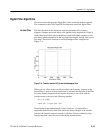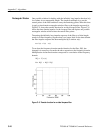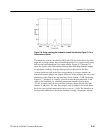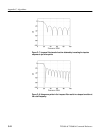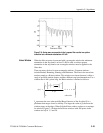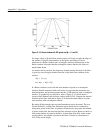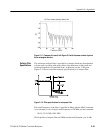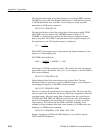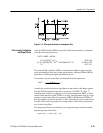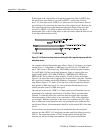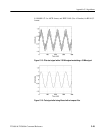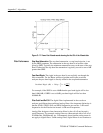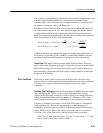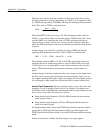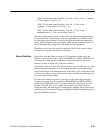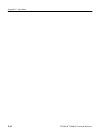
Appendix C: Algorithms
TVS600 & TVS600A Command Reference
C–27
Figure C–13: Filter specifications for a bandpass filter
After the TWID and the SREJ are specified, the b for the window is calculated
from the following expressions:
SATT
= SREJ + 6.0206
0.1102(SATT –8.7) SATT >50
b = 0.58422(SATT –21)
0.4
+0.07886(SATT –21) 21≤SATT ≤50
0 SATT <21
The value 6.0206 is added to SREJ to ensure that the additive ripple from the
notch and bandpass filters stay within specifications. Adding 6.0206 to SREJ is
equivalent to dividing the ripple specification by two.
The number of points in the filter are calculated from the expression:
NFILT +
SATT–8
2.285 @ p @ TWID
) 1
Actually the waveform analyzer algorithm uses the smallest odd integer greater
than the NFILT calculated in the above expression (if NFILT=75.1 then 77
would be used). If there is a high level of stop band attenuation, SREJ, or if the
relative filter transition width, TWID, is set very small then there may be a large
number of points in the filter. For example, if SREJ =80dB and the TWID=.01
then the number of points in the filter is 1087. The input waveform itself may be
less than 1087 points long and there are edge effects, which often preclude the
use of such a long filter.
The output waveform is calculated by convolving the input waveform with the
impulse response of the filter:
output wfm + (input wfm)*h(t)
Filter Length Limitations
and Edge Effects



